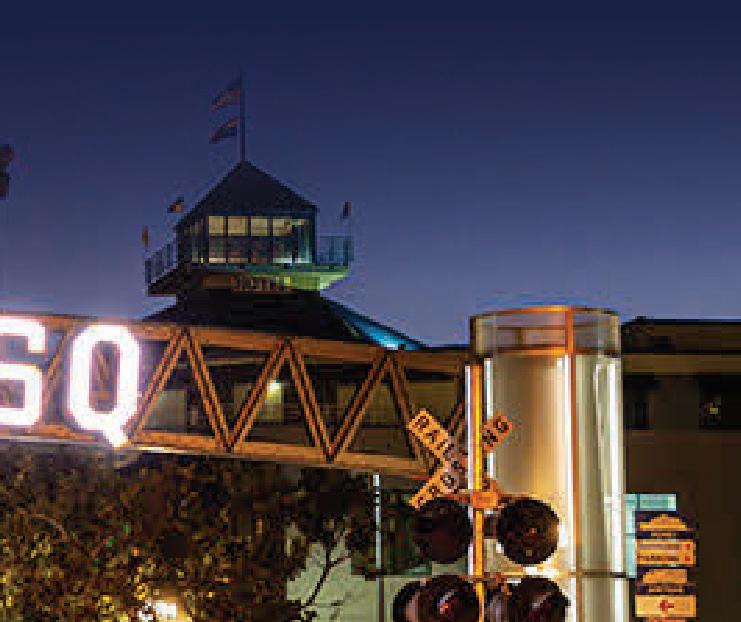






























We in the Bay Area love to complain about cold weather. But while most people at this time would prefer to be lounging poolside in a warm locale, I’m more of a fall/winter person. It might have something to do with growing up in deserts (Las Vegas, Palm Springs) and spending a formative decade on Maui (read: even “perfect” weather all the time gets monotonous—I know, I’m weird). I like the chilly seasons. Yes, it’s an introvert thing. Warm, sunny days are imbued with an unspoken pressure to go outside and be social. I welcome fog and rain
Jeffrey Edalatpour’s writing about arts, food and culture has appeared in KQED Arts, Metro Silicon Valley, Interview Magazine, Berkeleyside.com, The Rumpus and SF Weekly
so that I can stay in and think my thoughts. Plus, I like clothes—and wearing more of them! Coats, boots and thick-knit scarves are my adult comfort blankets.
Inspired by the stories of this month’s edition, I’ll likely cuddle up with a copy of Oakland author Leila Mottley’s debut novel, Nightcrawling, or settle in for a stylish film noir festival at home. When restlessness—or my extroverted partner—finally prompts me out, I will ditch my loungewear for something more festive at a nearby boutique, perhaps before treating ourselves to a luxurious, locally sourced dinner at Commis.
Lou Fancher has been published in Diablo Magazine, the Oakland Tribune, InDance, San Francisco Classical Voice, SF Weekly, WIRED.com and elsewhere.
Janis Hashe regularly contributes to the East Bay Express and other Bay Area publications.
Or maybe I’ll roam the charmed streets of Pt. Richmond before continuing my cultural quest with a visit to the Berkeley Art Museum and Pacific Film Archive. Their exhibit opening this month exploring the Buddhist tenet of “a constant state of reemerging, or arising” seems like an excellent endeavor for those of us who prefer to cocoon.
Whatever you feel inclined to do, may you find warmth within or amongst your loved ones this holiday season and into the New Year. Stay cozy!

— Samantha Campos, Editor
Kelly Vance is a member of the San Francisco Bay Area Film Critics Circle, and has been reviewing movies for the East Bay Express—as well as working in other editorial roles at the paper— since 1982.
Jane Vick writes about art, fashion and interesting experiences for the North Bay Bohemian and the Pacific Sun.

 BY Je rey Edalatpour
BY Je rey Edalatpour
 BY Franklin Avery
BY Franklin Avery
At the start of a weeknight meal service, a young, curly-haired commis, or assistant chef, asked his boss if he was plating an oyster dish correctly. Chef James Syhabout studied the plate for a nanosecond before directing the commis to rearrange the layers. Unlike a reality TV kitchen, the Michelin-starred chef of Commis didn’t shout at or berate his employee. Syhabout answered the question simply, neutrally, without an emotional flourish. The commis nodded, replied with an a rmative acknowledgment and returned to his station for a second attempt.
Dressed in black, Syhabout stood facing the prep station. He appeared to be ready, willing and able to answer any of the other three sous chefs’ questions or to take up knife and tweezers himself to finish one of his meticulously composed dishes. But the thought of his intervening began to seem unnecessary. Each chef was stoically attending to the precise arrangement of ingredients like jewelers hovering over the settings of precious stones. Their faces were marked by the same, concentrated expression. They largely ignored the presence of an outsider looking in on them.
The resulting dishes impress with
a dazzling sense of finesse. I tasted a quenelle of off-white parsley root, whipped to a creamy consistency and topped with a few dark briny dots of Kaluga caviar. Surrounded by a miniature moat the color of a melted emerald, the sauce inexplicably combined French sorrel and apple molasses. It was as if the chef had tapped into the heretofore dormant sweetness inside sorrel leaves that had only woken up on the palates of forest creatures.

In his 2018 cookbook, Hawker Fare: Stories and Recipes from a Refugee Chef’s Isan Thai and Lao Roots, Syhabout tells his origin story. The 300+ pages include
biographical anecdotes, recipes, photographs and a comprehensive glossary of herbs and sauces for “The Lao and Isan Pantry.” It’s notable that his first cookbook doesn’t lead with the name Commis, or recipes from Commis’ prix fixe menu—even though the chef opened Commis in 2009 before opening (and later closing) Hawker Fare’s Oakland location.
In his approach to fine dining, Syhabout’s Commis dons the carefully sculpted mask of haute cuisine. The staff at Commis is uniformed in various black and white ensembles. The décor and general ambiance conjure soothing words—sedate, subtle and subdued. »
To all appearances, the dishes are informed by European culinary techniques—by the chef’s training at the California Culinary Academy, by his years working for Chef David Kinch at Manresa in Los Gatos and by his travels abroad to investigate the kitchens of celebrated restaurants like Spain’s El Bulli.
When Syhabout spoke with me after my visit to Commis, he had just been to a farmers’ market where he’d found fresh persimmons (he likes to simply peel and then eat them as is). He drew a parallel between restaurants like Commis and the performing arts, such as ballet and the symphony. “There’s a certain amount of dedication and craft,” the chef said. “And a lot of discipline. We’re used to mise en place and organization,” and noticing little details like observing if a diner is left- or righthanded. “If you’re paying attention, you create a very bespoke experience.”
But underneath the shimmering lights of that luxe façade, the chef incorporates ingredients from



his Lao heritage onto Commis’ expensive plates. For Syhabout, MSG isn’t verboten. “Natural MSG is in everything,” he explained. “Tomatoes. Parmesan cheese, cheese in general. Anchovies. That’s why people like it. The whole ‘MSG is bad for you’ is bullshit.” Bitterness, he adds, is the most complex flavor profile, and umami. “If you go out to eat in Thailand or Laos, to a noodle stall on the street, your condiments will be salt, sugar, fish sauce, chili sauce and MSG,” he said.

Outside of co ee, bitterness on the plate is unfamiliar to most American palates. “It took a long time for people to like kimchi,” the chef notes. In talking with some of his Korean friends, back in the 1970s, they used to serve sauerkraut and tabasco and called it “kimchi.” Nowadays, the people who shop at the Korean plaza at 27th Street and Telegraph Avenue, where Syhabout grew up, come from a variety of diverse Bay Area communities.
That faint note of sweetness I tasted from the apple molasses might be
‘There’s a certain amount of dedication and craft. And a lot of discipline. We’re used to mise en place and organization,’ and noticing little details like observing if a diner is left- or right-handed. ‘If you’re paying attention, you create a very bespoke experience.’
— CHEF JAMES SYHABOUT



his way of catering to a Western diner. But even die-hard fans could still find plenty of bitter notes in the combination of parsley root, caviar and sorrel. Little by little, the chef said, he has been introducing fish sauce in some of his dishes. Instead of using salt, it’s a reliable way to coax out those umami flavors.
For five years, Syhabout commuted an hour each way to Manresa in the South Bay while he was living in Oakland. The genesis of Commis dawned on the chef over time. He asked himself the question, “Why can’t a fine dining, Michelin-starred restaurant like Manresa exist in the East Bay?” He acknowledges the presence and influence of Chez Panisse, but he wanted to create “something more contemporary, more modern and more personal.”

After having worked in one and two star Michelin-rated restaurants, Syhabout realized that he’d been part of the teams that earned those stars. If he could achieve that kind of success for other people’s restaurants, the chef wanted to know if he was capable of earning those stars on his own. The stars are definitely a goal, and an ongoing one. “When you put in so much hard work, you gotta have something materialize,” he explained. “It [a Michelin star] makes you feel good about yourself. It’s more like self-esteem for me.”
The chef accepts that it takes a certain type of personality that pursues Michelin stars. “I have to admit I’m pretty much O.C.D. I love 90-degree angles, clean surfaces. I don’t want to see a grain of salt on the counter. It freaks me out.” But when it comes down to what he and his
staff accomplish every day, the stars aren’t the driving force. “It’s the discipline of it, exercising the mind, exercising the craft.” Having established the Commis name and brand, Syhabout wants the restaurant to get better at what it does with every passing year. To do that, the chef makes another analogy, this time to sports. “It’s repetition, right? Sometimes you have to tweak things because systems aren’t working,” he said. “Or we find a way to do things either faster, more efficiently, until it becomes second nature to us.”
The COVID-19 pandemic posed a particularly difficult problem for prix fixe menus like the ones Commis serves. As Syhabout put it, for a 12-course meal, “How many to-go containers are people going to throw in the trash?” In March of 2020, the chef furloughed 90% of his employees. He still had to pay rent, utilities, the alarm company, workers’ compensation and health insurance.
“Somehow, we had to get our doors open, but how were we going to do it?” he asked.
After being open for over a decade, Syhabout understood that, despite the circumstances, people still want to celebrate the milestones of life: promotions, birthdays, anniversaries, etc. Commis shut its doors for six weeks so he and his remaining staff could figure out how to come up with an abbreviated version of the menu. “We did familystyle meals for two people at a much more reasonable price point,” he recalled. “And we turned the bar into a wine and cocktail shop.” The menu changed every week, despite having to work around the purveyors’ new schedules. Some farmers were just not going to farmers’ markets either. “So how do we get product?”
“We had to think outside of the box and make it work,” the chef said. The staff still wore suits and uniforms. The reheating instructions were still very specific and regimented. And the neighborhood responded. “I’m glad to have a very talented team. We all collaborate together.” But when the restrictions started to relax, some of his furloughed employees had moved away from California for good. “Getting staff to come back was hard, when people just wanted to feel safe,” he said.
For now, Commis is back to regular dining hours. Chef Syhabout is standing at attention with his many chefs, readying each elaborately constructed course for delectation. Masks are, temporarily, a thing of the past.
Commis, open Tues to Sat 5-10pm, 3859 Piedmont Ave., Oakland. 510.653.3902. commisrestaurant.com.





The ultimate truth is that there is nobody separate from anybody, that there is not one single thing that exists by itself.
— Tenshin Reb Anderson, in Warm Smiles from Cold Mountains
The concept of “dependent arising,” or, as some traditions refer to it, “dependent coarising,” is one of Buddhism’s central beliefs. It states that all entities are interdependent, in a state of constant reemerging, or arising.

On Dec. 14, the UC Berkeley Art Museum and Pacific Film Archive (BAMPFA) will open a new curated selection of Buddhist art, from antiquity to the present, “Endless Knot: Struggle and Healing in the Buddhist World,” featuring works focused on this concept. »
BY Janis HasheWOODBLOCK MURAL Hand-colored woodcut printed on mulberry paper and silk, Yun-fei Ji, ‘The Three Gorges Dam Migration,’ New York, 2009-2010.







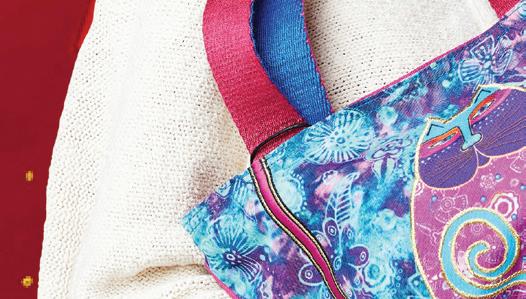










«
Thirty-three works, drawn both from BAMPFA’s own Asian art collection and from private collections, that have never previously been exhibited in a museum setting, are part of the exhibit. They include artworks that are thousands of years old, alongside new works by living artists such as Binh Danh, Takashi Murakami, Sopheap Pich, Tsherin Sherpa and others. Of BAMPFA’s extensive permanent collection of Buddhist art, more than a dozen unique works will be on view.
“The contemporary art will be juxtaposed with the historic,” said
associate curator Elaine Yau. “There will be a thematic flow throughout.”
Yau noted that many exhibitions of Buddhist art concentrate on pieces from China and Japan, but “Endless Knot” will instead focus on a “geographically expansive approach,” including art from present-day Cambodia, Indonesia, Myanmar, Nepal and Thailand. “The exhibit uses Buddhist ideas to explore geopolitical circumstances, such as the cataclysm of the Khmer Rouge on Cambodian society,” Yau said. This is designed to present a diverse picture of both Asian and Buddhist cultures.

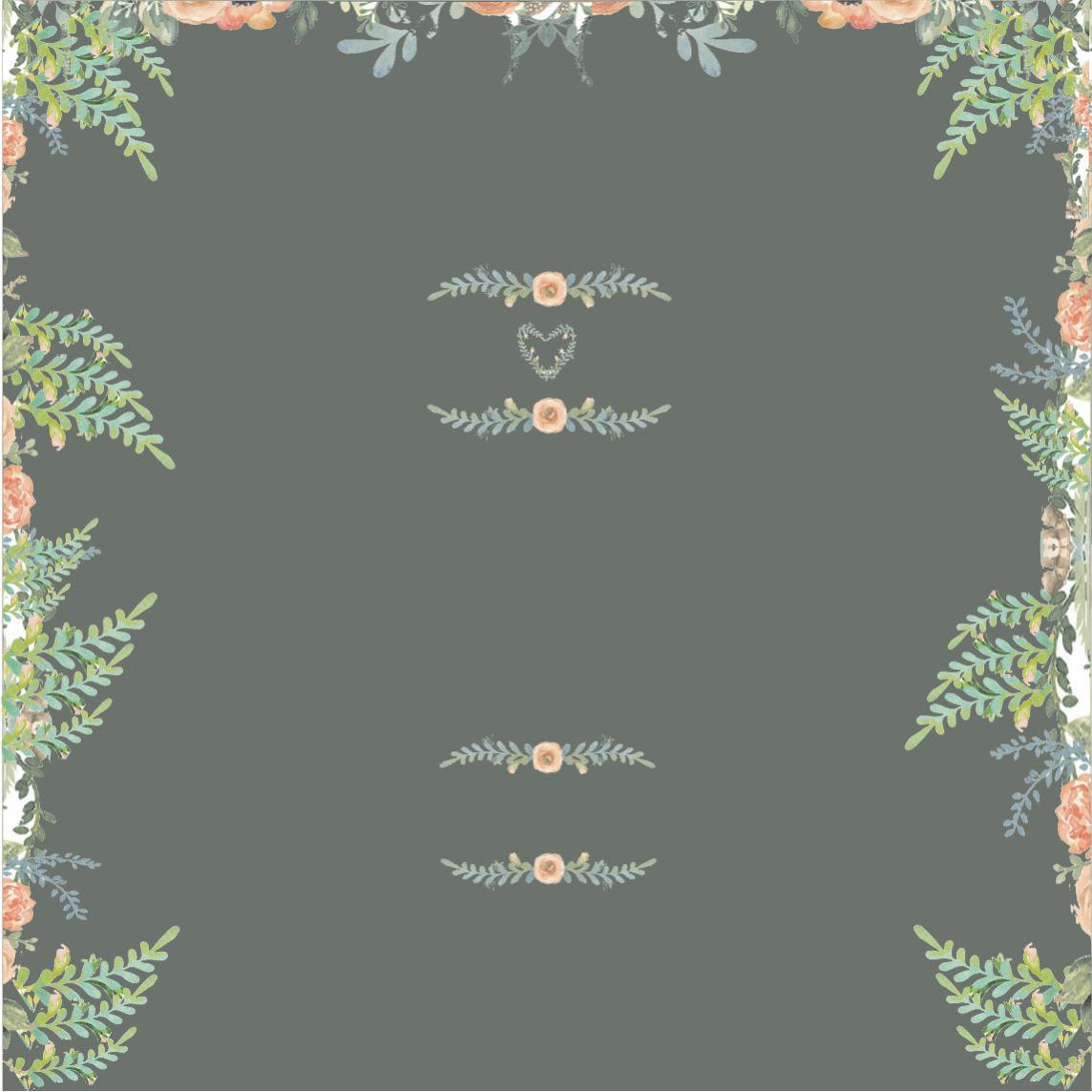

















































































«
The show will feature the art of internationally renowned TibetanAmerican artist Tsherin Sherpa, who will be contributing a new work. The piece will feature a figure of the Buddha gazing towards a protector deity, painted in the artist's distinctive style, which is based on his digital manipulation of a traditionally rendered image. A new, never-beforeexhibited video installation by FrenchTibetan artist Marie-Dolma Chophel, entitled Resilience, will also be shown. The five-minute, 20-second video is part of the third section of “Endless Knot.”
Other pieces are “transcultural,” said Yau, such as an enshrined Buddha, in which the Buddha image is from the Indonesian island of Java, but the shrine itself is from Myanmar.


Visitors will walk through “Endless Knot” in three sections. The first “examines how artists have grappled with political terrains and cross-cultural encounters,” according to BAMPFA materials.
The second section’s artworks “highlight the relationship between actions and consequences,” or, in other words, the functioning of karma. This section will include Do Ho Suh’s 2004 inkjet print, Karma Juggler, said Yau. The section is also designed to illustrate “the conveyance of knowledge through interpersonal relationships.” Yau added that another exhibit is a “calligraphic poem of the ‘dharma of the butterfly,’ which is a catalyst for a line of thinking, undermining human-centered experience.”
The last section will explore the ways that people “living within the Buddhist world have attempted to obtain a degree
of security in their lives, whether through practices in divination, praying to specific deities for health and wealth, or a pre-modern combination of science and religion,” BAMPFA materials explain. The depiction of the last-listed category includes anatomical illustrations from a Thai Buddhist medical text.
“Endless Knot” is guest-curated by Dr. Rosaline Kyo, a professor of art and Chinese studies at Davidson College, who has previously collaborated with BAMPFA on multiple exhibitions.
“‘Endless Knot’ ties together the deep strengths of BAMPFA’s historical Buddhist art collection with the fresh perspectives of living artists from the global Asian diaspora who are influenced by Buddhist thought,” Kyo said. “The vast historical scale of this exhibition encourages viewers to step back from the cacophony of present-day concerns and reflect on the enduring concept of Dependent Arising, which has been a grounding force and creative inspiration for artists in the Buddhist world for more than 2,000 years.”
A new essay by Kyo will illuminate the themes of “Endless Knot,” which will be made available online and via a QR code in the exhibition gallery.
BAMPFA is also offering multiple public events in conjunction with the exhibition.
Gallery Talks with Kyo will be presented on these dates:
Sunday, Jan. 15, 2pm
Friday, Feb. 24, noon
Sunday, April 16, noon
Friday, May 12, noon
Sunday, June11, 4pm


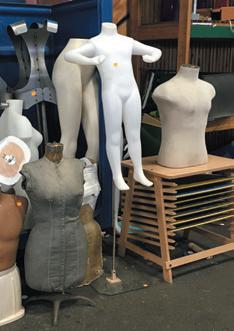


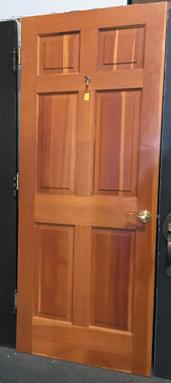
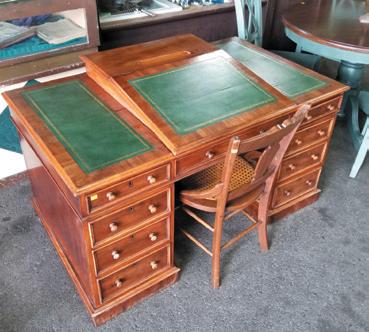





«
The Lijin Lecture will be given by Tsherin Sherpa on Sunday, April 30, at noon. The Lijin Lecture is BAMPFA's annual endowed lecture on Asian art, featuring a contemporary artist.
Tsherin Sherpa was born in Kathmandu, Nepal, in 1968. He currently divides his time between California and Kathmandu, where he established the Himalayan Art Initiative to foster the preservation of the traditional thangka painting methods he learned from his father, Master Urgen Dorge. His contemporary work draws
from Tibetan Buddhist iconography to comment on his diasporic experience, and on the intersections of the sacred and profane.
In his lecture, Sherpa “will explore how contemporary Himalayan artists have found innovative ways to combine the traditional and the contemporary to reflect on both everyday life and global affairs, and will situate his work featured in ‘Endless Knot’ within this larger context,” according to BAMPFA materials.
“...if we seek the permanence of an object as something existing from its own side, we discover

something inexpressible. If we take three sticks and place them together in a certain way, they will all stand up. If each of the sticks could stand under its own power, it would remain standing even if the others were removed, but they cannot. In this way we must understand dependent arising precisely.”
—Zongtrul Losang Tsöndru, Chöd in the Ganden Tradition: The Oral Instructions of Kyabje Zong Rinpoche
‘Endless Knot: Struggle and Healing in the Buddhist World,’ UC Berkeley Art Museum and Pacific Film Archive (BAMPFA), 2155 Center St., Berkeley. 510-642-0808, www. bampfa.org On view through June 11, 2023.
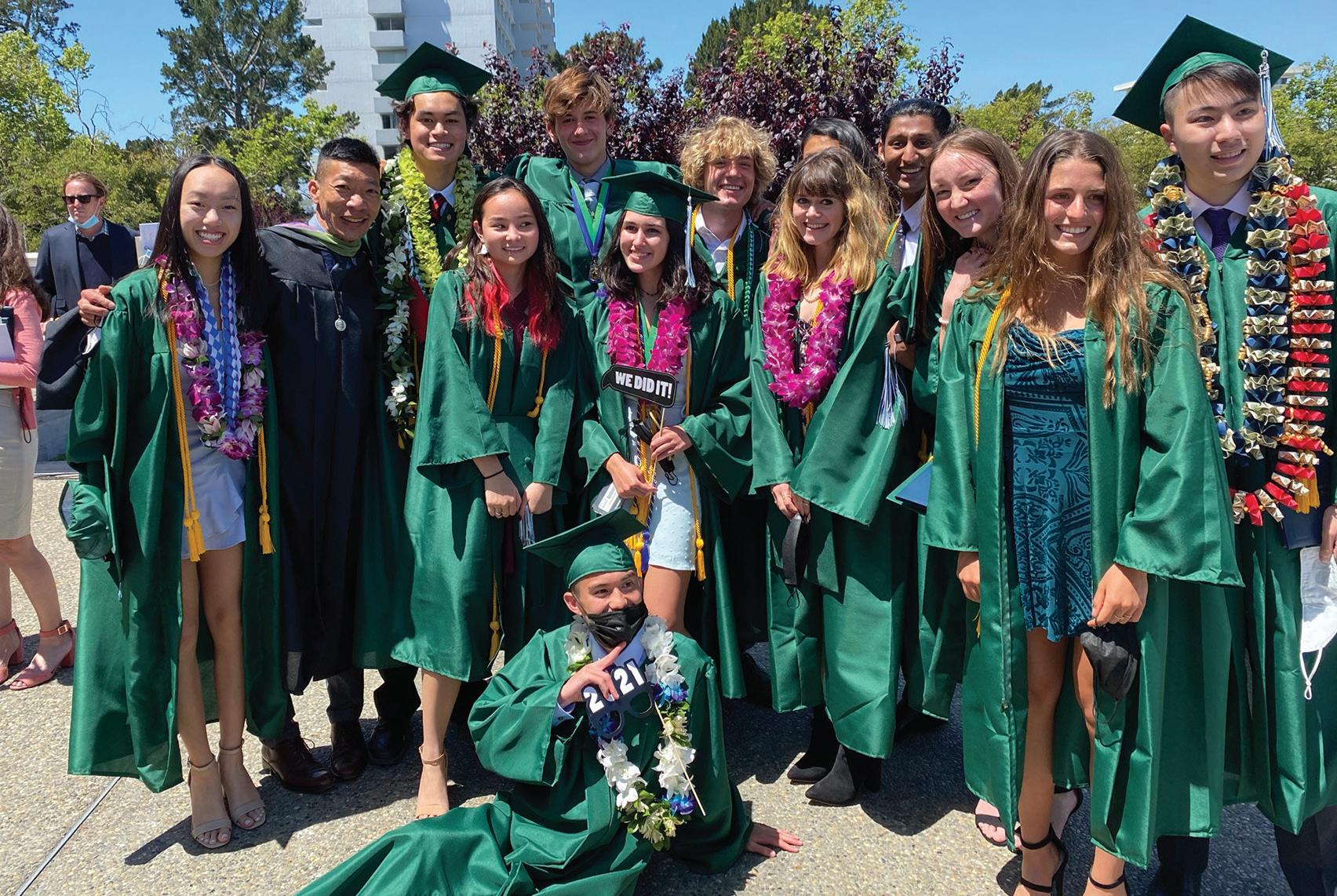




















In many ways, a stroll around Point Richmond is a stroll back through history—only with fun shopping and great food. The village was the original town of Richmond, and a rip-roaring one it once was too, when the railroads and then the oil workers arrived. Many of the 19th to early 20th-century buildings still exist, many still in use, adding to the period charm.
A leisurely afternoon spent here, or a leisurely evening if visitors would like to take in live music or a play, will be its own relaxing reward. Note that the best day for a visit is Saturday, when all the stores are open. Point Richmond is festive during the holidays; merchants’ websites often announce special events. Santa has been known to put in appearances, and, one never knows, maybe folks will encounter the Ghost of Point Richmond Past...
Whether people are shopping for themselves, for unique gifts or both, Point Richmond’s local merchants exude the village’s artsy-but-playful vibe. Shoppers can start on W. Richmond Ave. with the rather amazing Guillermina Asian Art & Antiques

Although arts, crafts and furniture can be found from many places in Asia, owner Guillermina LaFever specializes in pieces from Japan. Her vintage jewelry collection alone is worth a visit. An incredible amount of beautiful things congregate here. The store is open weekends, and by appointment. 101 W. Richmond Ave. 510.237.0036, guillermina.com
Across the street is the fun-and-
























funky Mom & Pop Art Shop, carrying local arts and crafts, antique and vintage bits, games, jewelry, hand printed pillows, cards… In the words of co-owner/artist Kelly Nicolaisen, it’s an “art general store.” They also carry art supplies. Hint: ideal stocking-stu er destination. Their site features special December event updates. 24 W. Richmond Ave. 510.730.1154, mompopartshop.com «


» One block down is Outback in the Temple of Venus, a shrine to designer Boho chic. Owner Devi Jacobs offers lines such as Citron and Johnny Was at greatly discounted prices, alongside her own, American-made line of items like the “Prayer Protection” tunic, and “elevated sweats” made from bamboo. Hats, scarves, socks and “healing things,” like the popular “People Putty” salve, add to the grooviness. On Saturdays, the “Clothing Library,” where vintage and consignment items can be “lent,” is open. 139 W. Richmond Ave. 510.237.1199.

If folks called in advance to make
an appointment, they can tack back to cross-street Park Place to find DeWitt Art and Custom Framing, where Pam DeWitt proudly shows paintings from her father, Jim DeWitt, an internationally known maritime artist. A former sailmaker and sailboat racer, the now-92-year-old’s work, in oils, gouache and watercolor, is “meticulously accurate,” says his daughter, besides joyously capturing the thrill of sailing. 125 Park Place. 510.236.1401, dewittgalleryandframing.com
Down the street and to the left, visitors can meander to the Point Richmond History Museum, a tiny period building, the oldest commercial structure in Richmond, rescued from razing and moved to its current location in 1990. There they may well find font of local history (and history hike leader) Karen Buchanan, who knows all the village’s secrets. Interested parties can arrange with her in advance to take a tour and hear the tales. The museum is only open Thursday and Saturday,
BOHO CHIC Hats, scarves, socks and “healing things,” like the popular “People Putty” salve, add to the grooviness of Outback in the Temple of Venus.
11am-2pm. 139 1/2 W. Washington Ave. 510.412.2202, pointrichmondhistory.org. Karen Buchanan is at 415.710.4480. «

Whether people are shopping for themselves, for unique gifts or both, Point Richmond’s local merchants exude the village’s artsy-but-playful vibe.STOCKING STUFFERS Mom & Pop Art Shop carries local arts and crafts, antique and vintage bits, games, jewelry, hand printed pillows and more.

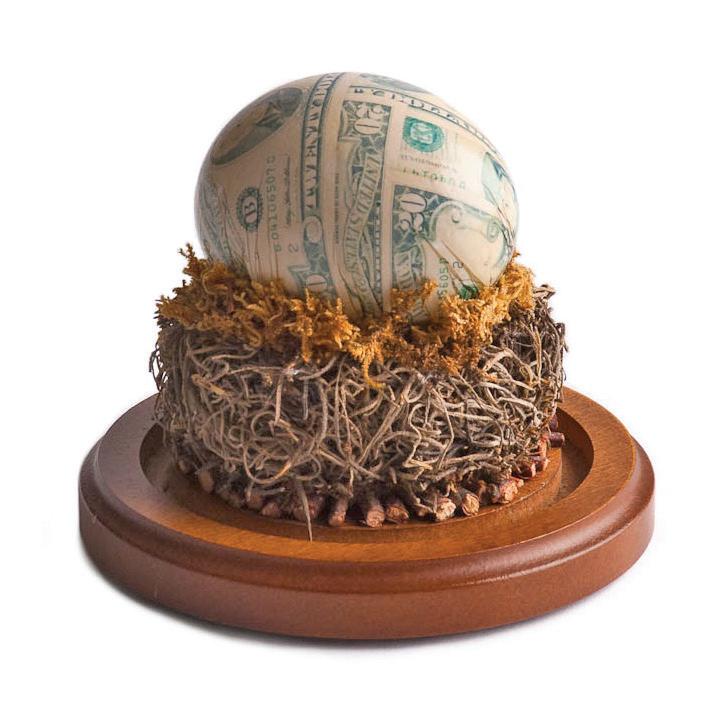


Back on Park Place, one can partake in a beverage, a snack and possibly live music at hangout Kaleidoscope Coffee. How about sourdough toast with hummus, artichoke hearts and cilantro? 109 Park Place Ave. 510.260.0848, kaleidoscopecoffee.com
Lunch options also include saladand-sandwich haven Little Louie’ s. Those who are hungry can perhaps order their Reuben, with homemade corned beef, sauerkraut, Swiss cheese and Thousand Island dressing on rye. Tip: Yummy desserts abound here. On Saturday, open 7:30am-2pm. 49 Washington Ave. 510.260.0848, littlelouies.com
Diners order at the counter, then sit down at Mexican favorite Masa, famed for its homemade tamales, including a dessert strawberry tamale. Personal experience notes that the burritos are also delicious.199 Park Place. 510.778.1463, masatamalesandtacos.com
At the corner of W. Richmond and Railroad avenues stands the only rugby pub folks may ever eat in, the Up & Under Rugby Pub and Grill. Pub goers can dig into Pub Mac & Cheese, an “Outside Center” burger or fish & chips, washed down with a local brew, or, taking a tip from Joe Montana, a Guinness. 2 W. Richmond Ave. 510.778.1313, theupandunder.com

A blast to the more recent—and tasty—past can be found at the Great American Hamburger & Pie Co. This diner, kitty-korner across the railroad tracks from the Up & Under, is unpretentious and wonderful in its old-fashioned way. Pies are homemade, and they have milkshakes! Only open Mon-Fri,
10am-4pm. 35 E. Richmond Ave. 510.233.2223, gahamburger.com
Say visitors are unwilling to head home when the sun goes down. While not Las Vegas, Point Richmond does offer weekend entertainment options. Long-closed for seismic retrofitting, beloved local theater, the Masquers Playhouse, has reopened. The 66-yearold, 89-seat community theater is offering Amelie, The Musical at 8pm, Dec. 2, 3, 8, 9 and 10. 105 Park Place. 510.232.4031, masquers.org
Newly reopened as Baltic Kiss, the historic site now houses the newest
venture from Black Star Pirate BBQ’s Tony Carracci. Featuring Cajun and Creole food, and a full bar, it also has live music several nights a week, and stays open later than virtually anything (OK, anything) in Point Richmond. The Zydeco Flames perform there on Saturday, Dec. 17. 135 Park Place. baltickiss.com
The community website, pointrichmond. com, can provide a helpful overview, but is not updated frequently. (For example, the restaurant at the Hotel Mac has been closed for some time.) But it’s an excellent resource for photos and background information about the village. ❤




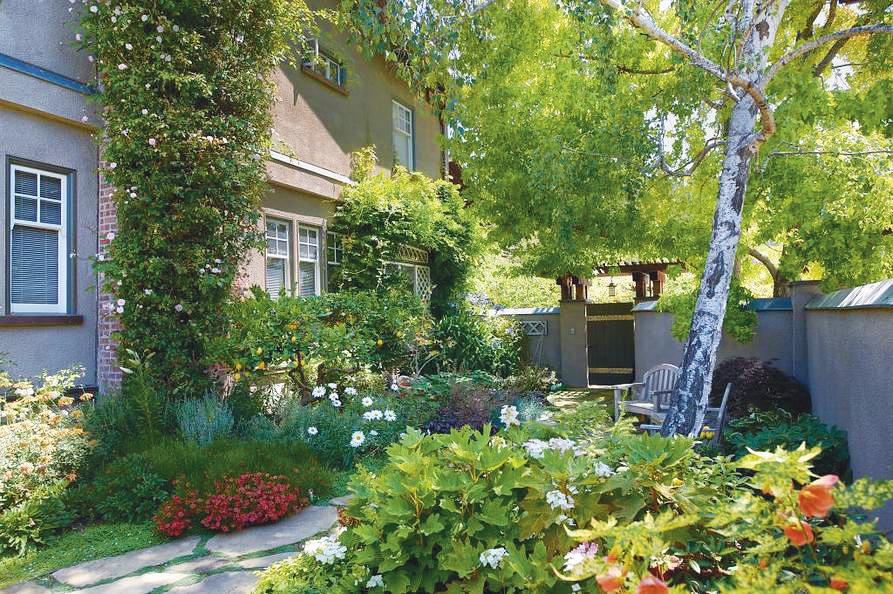
 BY Kelly Vance
BY Kelly Vance
The film production company now called 20th Century Studios, previously known as 21st Century Fox, and before that as 20th Century Fox, had a fascinating history before Rupert Murdoch, then Disney, took over.
Founded in 1935 in the era of big Hollywood studios, Fox in its glory days was the home of producer Darryl F. Zanuck, Marilyn Monroe, Tyrone








Power, Shirley Temple and director John Ford, plus a considerable roster of film noirs. The Criterion Collection understands the significance of those noirs, which is why the Criterion Channel streamed its “Fox Noir” showcase last year, featuring such classic titles as Laura, Nightmare Alley, Pickup on South Street and Night and the City Criterion’s 2022 lineup of Fox noirs is even more bitter, hard-hitting and merciless—the perfect home-video accompaniment to our current winter of discontent.
Case in point: Thieves’ Highway (1949). It’s a fortuitous confluence of writing, direction, acting and production values, on the timeless theme of dumb luck, aka fate. The story: a tough, ambitious truck driver named Nick Garcos (Richard Conte) tries, and tries again, to deliver a load of Golden Delicious apples to market, despite heavy odds. As dreamt up by legendary writer A.I. “Buzz” Bezzerides (Kiss Me Deadly, They Drive by Night, On Dangerous Ground), under the direction of the equally feisty Jules Dassin, Nick’s California blacktop odyssey takes on Homeric grandeur despite its determinedly working-class milieu.
The malevolent obstacle in the paths of Nick and his fellow long-haul trucker, Ed (Millard Mitchell), is Mike Figlia
(Lee J. Cobb, never more belligerent), a crooked bully-boy wholesale fruit dealer in San Francisco’s long-gone produce district on the Embarcadero. Director Dassin, soon to be blacklisted by government anti-communist crusaders, lavishes the same sort of realistic detail he brought to The Naked City, Brute Force, Rififi and Topkapi, on Nick and Ed’s harrowing 36-hour run from Fresno to San Francisco—driving all night on crowded two-lane pre-interstate roads.
En route, Bezzerides and Dassin cast their eyes on a crazy quilt of Golden State ethnicities. Nick and his family are Greek (as was Bezzerides, here adapting his own novel), the fruit growers speak Polish, while Figlia and local floozy Rica (Valentina Cortesa) are Italian— where are all the braceros? Get set for crashes, gashes and goons in the night. Flummoxed Nick to frosty Rica: “You look like chipped glass.”
Alongside Thieves’ Highway in the “Fox Noir” lineup are blue-chip crime pics by filmmakers Otto Preminger (Fallen Angel), Robert Siodmak (Cry of the City), Elia Kazan (Panic in the Streets), Robert Wise (The House on Telegraph Hill) and studio lifer Henry Hathaway (The Dark Corner, Kiss of Death, Call Northside 777).
The Criterion series Starring Veronica Lake functions as a companion piece to the noirs. Lake, the diminutive
blond siren with the husky voice, matches up perfectly with her vertically challenged longtime co-star Alan Ladd, in director George Marshall’s The Blue Dahlia, a typically sardonic outing for the screenwriter, ace detective novelist Raymond Chandler.
Returning bomber pilot Johnny Morrison (Ladd) discovers his party-girl wife back home (slinky Doris Dowling) has too many latent fingerprints on her, so he scrams—right into the arms of rebound gal Lake. The supporting cast is solid gold: Johnny’s army buddy (William Bendix), a PTSD case, goes nuts whenever he hears big-band-swing “monkey music.” Howard Da Silva refines his sleaze credentials as a bent nightclub owner.
Dowling, who later decamped to Italy for work on Bitter Rice and Orson Welles’ Othello, has the most lascivious eyes in the business. And Beaver Cleaver’s dad, Hugh Beaumont, appears as another army buddy. When Lake and Ladd lock lips, that’s the sound of money you’re hearing—they made eight movies together.
Other Lake starrers in the series: Preston Sturges’ Sullivan’s Travels; This Gun for Hire and The Glass Key, both with Ladd; and I Married a Witch. For more details: criterionchannel.com.
Streaming on the Criterion Channel
Criterion’s 2022 lineup of Fox noirs is even more bitter, hard-hitting and merciless— the perfect home-video accompaniment to our current winter of discontent.


Holiday season is here.
*Bells jingle so ly in the distance; steam rises o a cup of hot chocolate.

* A miraculous and much-needed week or two of rain, nippy temperature and shop windows dutifully bedecked in honor of various winter festivities all confirm it.
Maple Street Denim is a great spot to find a pair of perfectly fit jeans for the holiday season.
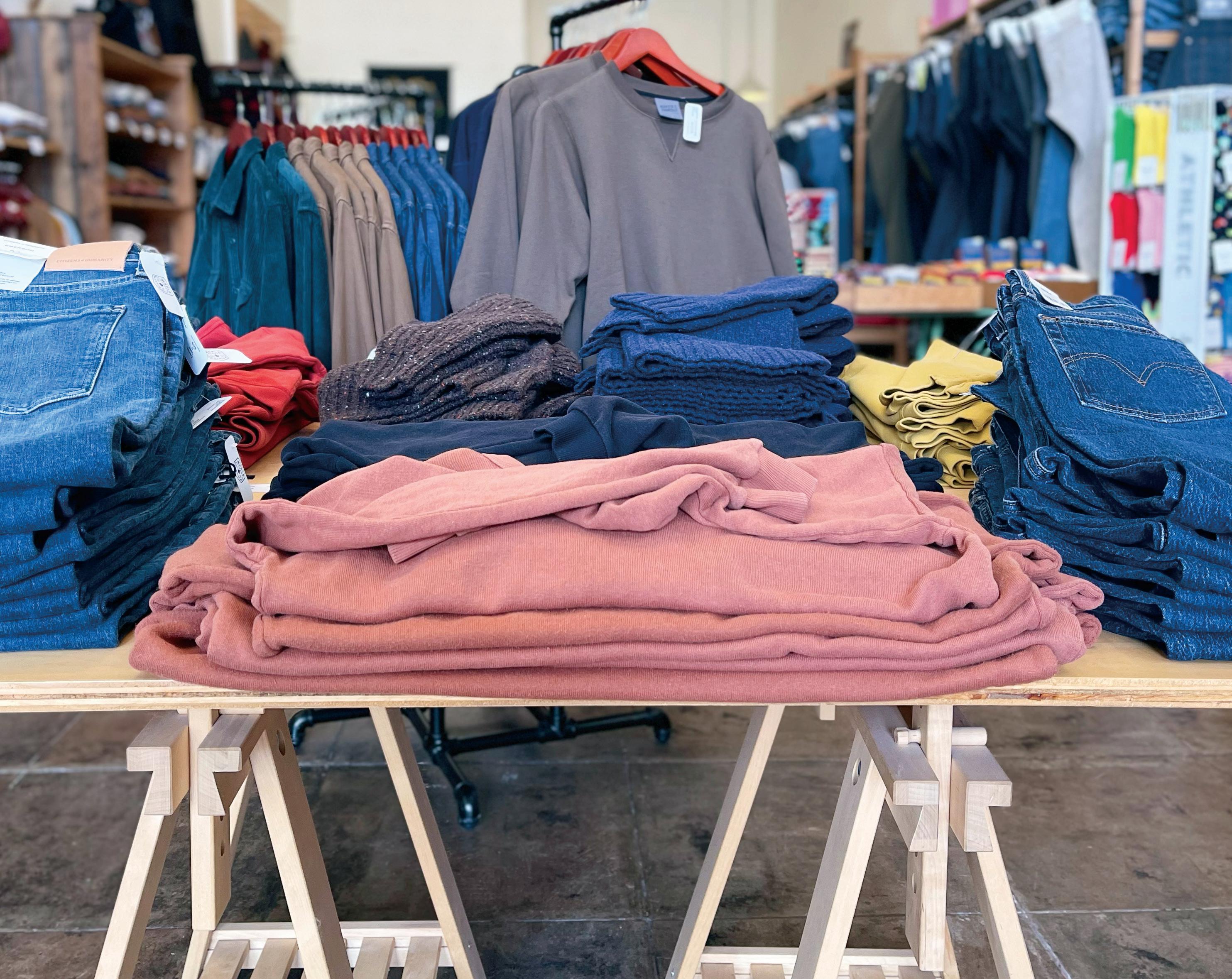



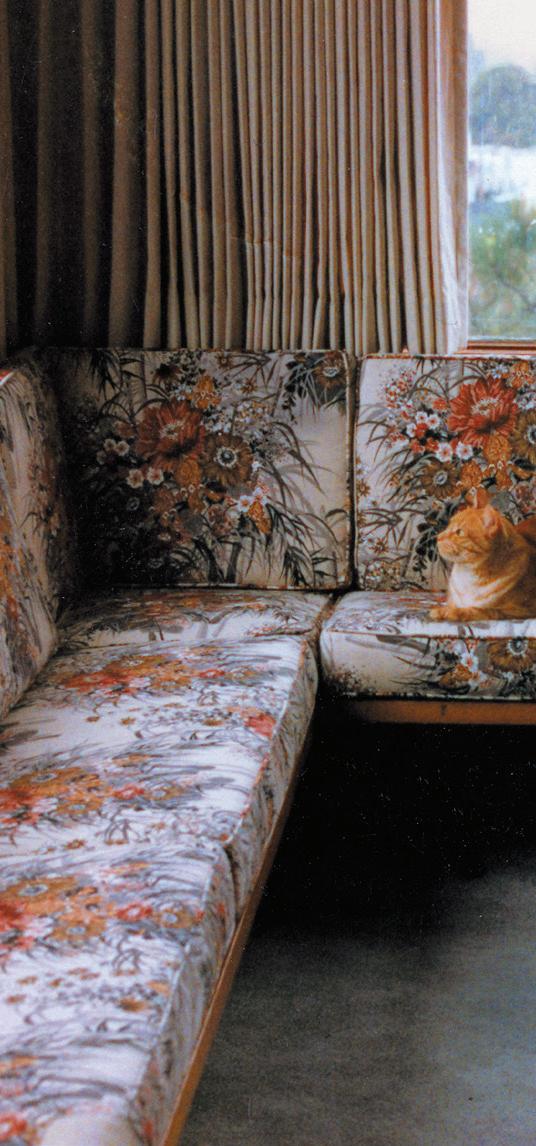


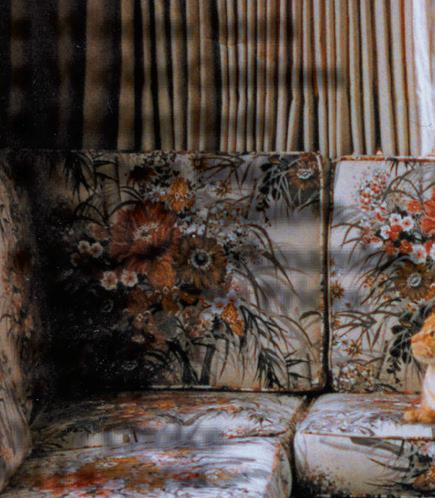





2355 Broadway, Suite 1 Oakland 94612
Loyal East Bay readers might be familiar with Taylor Jay already— last year I wrote about her story, inspiration and designs. Her dreamycomfortable and utterly stylish fashion line makes a slight overindulgence at dinner or the desire to dance all night unrestricted by tight clothing totally available. Taylor Jay’s pieces are made from soft, buttery fabric that moves with the body and is effortlessly stylish; it’s the nexus of comfort and excellence. Shoppers can stop in the shop to snag a sweet kimono set, a romper or a dress and meet Taylor herself; she’s often in the shop.
3223 Grand Ave., Oakland 94610
LIKE BUTTER Taylor Jay’s fabrics and designs are the ultimate in comfort and elegance.
Whether it’s Christmas, Hanukkah or a non-denominational gathering of friends and loved ones, the winter season is a fantastic opportunity to dress up, down and generally all around. By this I mean, don’t dress to impress someone else, but let’s dress the heck up for ourselves this holiday season! Let’s give the gift of feeling great in our
»
clothes—to ourselves first and each other by proxy. I’ll cheers a glass of dairy-free eggnog to that.
See below for a few Oakland establishments ready and enthusiastic about providing any and all patrons with sartorial options this holiday season. Go, be merry, be fashionable!
Founded by Lori Tiedemann in Berkeley in 2017, Radbird is a fashion and consignment store that now also has an Oakland location, just across the street from the Grand Lake Theater in Oakland. Radbird is chock full of local artists’ work and vintage consignment, and one can build essentially any outfit at either location. Go head-to-toe Radbird this holiday season and know that finds there will last. In Tiedemann’s words, "We hope to show the community that fast fashion is not the way to go and that purchasing a quality piece means that you will keep it for a lifetime and not just a season.”


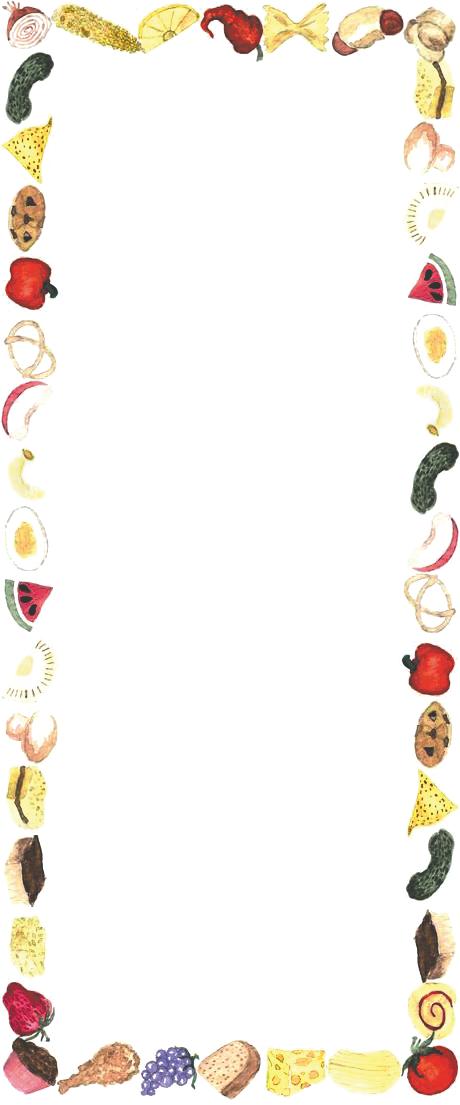


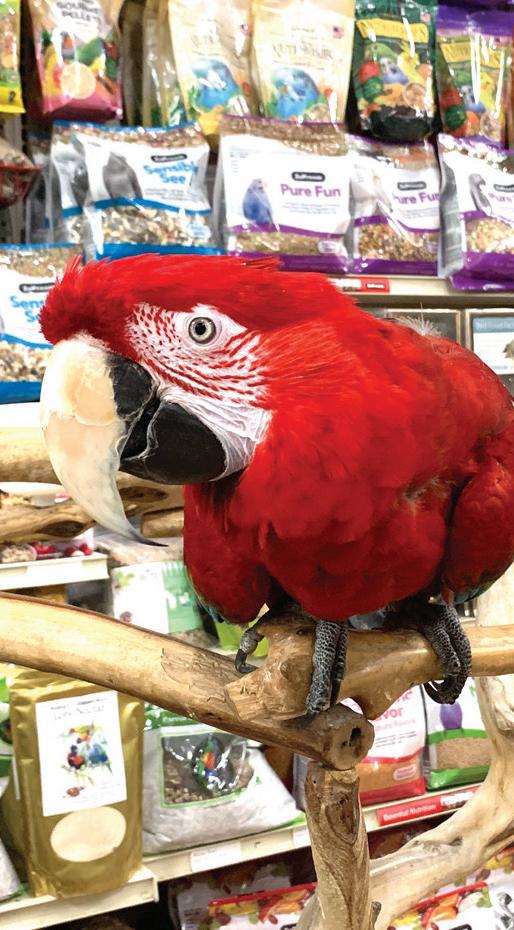




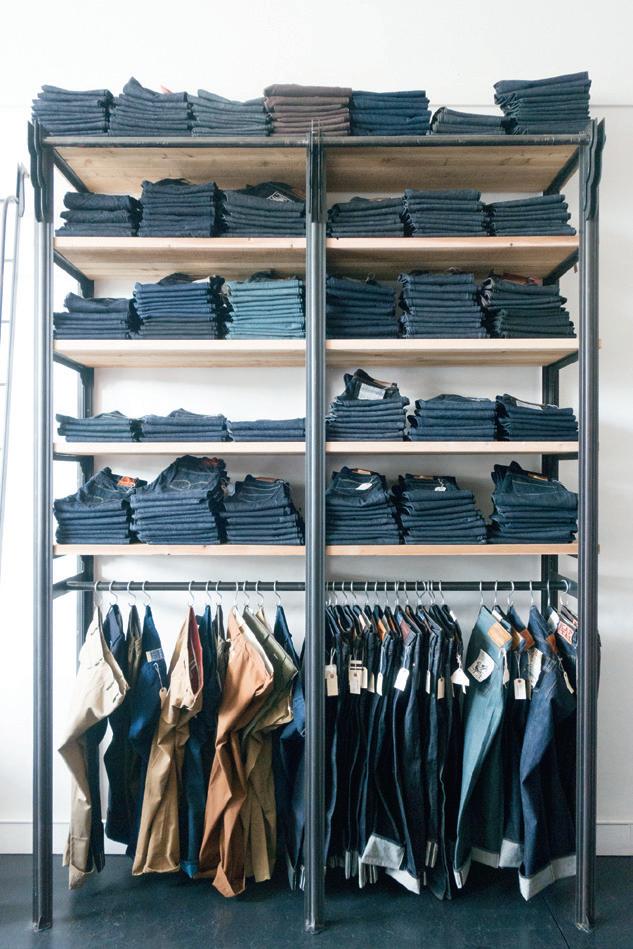
4266 Piedmont Ave. Oakland 94611
4200 Piedmont Ave., Oakland 94611
Maple Street was founded by Julie Harleman in 2014 and is a no-brainer for those looking for well-made, built-to-last options. From durable overcoats to cute dresses to stellarfitting jeans, this is a great spot to find an outfit that not only works for the holidays, but all year round. There’s a funky, Americana vibe in the shop, and a great perk of this spot is that they’ll fit customers for jeans to ensure the best possible purchase.
5010 Telegraph Ave. Oakland 94609
Also a familiar name to those who read East Bay, Standard and Strange is another ethically sourced, environmentally conscious spot in Oakland that promises to provide a stellar suite of lasting apparel. Founded by Jeremy Smith and Neil Berrett, the shop, which also has locations in Santa Fe, NM and Brooklyn, NY, is a proverbial mecca of brand options. Shoppers can find Montaro, Fountainhead Leather, North No Name, Simmons Bilt and more. Each of these items is a work of art, made in moderated batches and built to last. That leather or denim or knit one has been looking for can be found, knowing it’s a lifetime buy.
4188 Piedmont Ave. Oakland, CA 94611
Mercy Vintage has a super cute vibe, with femme undertones and a creamy, elegant palette. This is a pearly dreamspace of mellow grace in clothing and jewelry. The shop keeps its eye on designers whom they consider “the makers of future vintage” and loves a minimalist look: linens, silks and anything seeming like wearable art. Shoppers can find vintage and contemporary and an enthusiastic, super-stylish staff, excited to help put an outfit together. A chiffon over blouse, a beige French chore coat, a pair of brass hoops or a pair of chartreuse mules can all be found here.
The shop just celebrated its 10-year anniversary, and Good Neighbor is indeed a good neighbor to have for the art, fashion and selfcare-oriented in the East Bay. Owner Dana Olson is on the same tip as my other Oaklandbased recommendations regarding slow fashion and mindful consumption. Her goal, and what customers can expect to find, is a selection of jewelry, plants, body products, makeup and clothing all geared towards bringing softness, self love and opening to the body, heart and mind. As Olson herself says, “Our mind and our heart health manifest in our physical body—having tools to help us ground, enliven, manifest and feel safe are things we need to navigate this human experience on Earth.”
482 49th St., Oakland 94609
This woman-owned and operated clothing brand is an Oakland/Ojai dream, bringing a beautiful balance of trending styles and classic lines to their apparel and accessories. Shoppers can come for the plaid bucket hat; stay for the quilt coat. Golden and her team are committed to making clothing that promotes movement and fun, and their clothing is made in collaboration with a woman-owned co-op in Peru, a fairtrade certified factory in India and a family-owned, fair-wage factory in Hong Kong.
Any of these are excellent options for a holiday outfit that will last long after the season ends. Cheers and good tidings! ❤
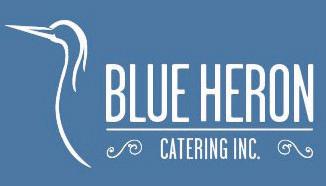




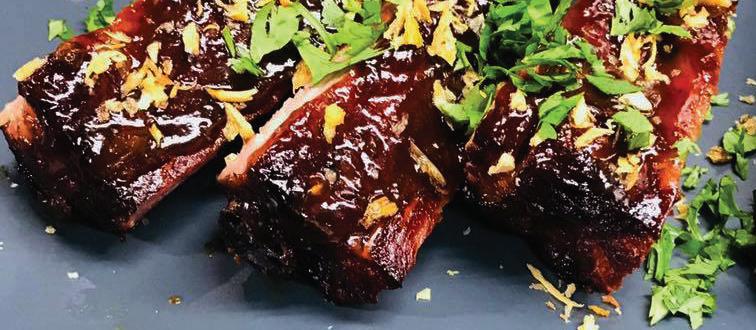



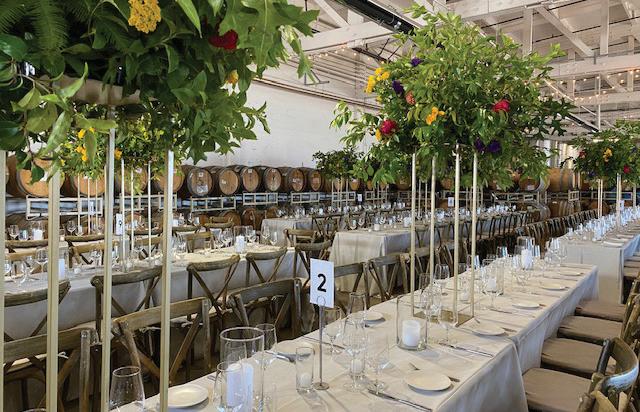

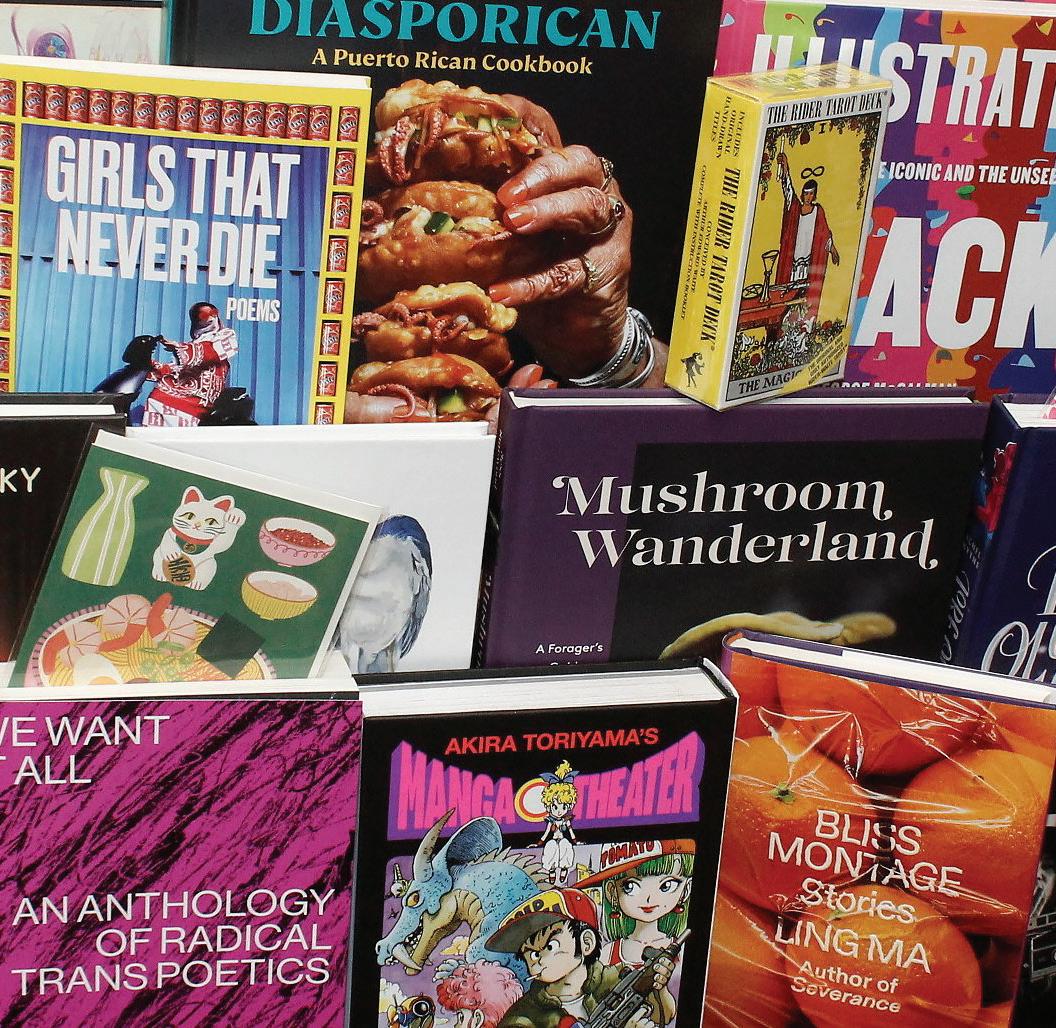
‘Nightcrawling’ by local author Leila Mottley is richly complex and primed for joyful revisits



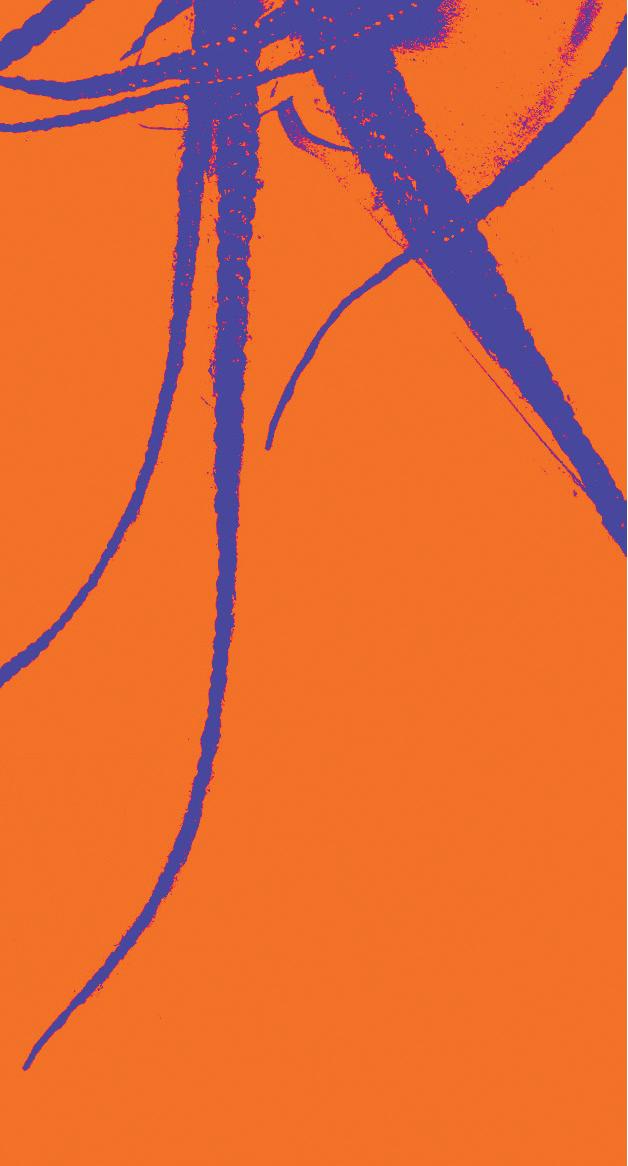


 BY Lou Fancher
BY Lou Fancher
For readers of fiction and poetry, the best novels and poem collections are books that upon reaching the final page, one thought is primary: I must read this again. Absolute favorite books, call them “forever books,” go onto special bookshelves, saved for third and fourth—and more—readings that actually happen.
»

























full
Importantly, the urge to return to a book isn’t the result of reading with haste, distraction or sloppiness. Instead, with each revisiting, there are joyful, surprising insights and rekindled appreciation for a book that is a living organism. As much as a reader evolves and changes over time, so too does one’s perspective on a novel or poetry collection reposition and expand.
Nightcrawling (Knopf), the debut novel by Oakland-based Leila Mottley, rises for many readers to that “forever book” stature. Named youth poet laureate of Oakland in 2018, Mottley’s first foray as a published novelist—she wrote her first, unpublished novel at age 14—has landed on Oprah’s Book Club list, was longlisted for the Booker Prize in 2022, and has garnered rave reviews in trade and popular publications and media.
The novel centers on 17-year-old protagonist Kiara, a Black girl in Oakland whose family is ruptured by death, addiction, incarceration, adverse mental health and the inequities, ineptitudes and corruptions of the criminal justice system. Mottley, whose own family was stable and afforded her an experience different than Kiara’s, has said about the fictional story that it was inspired in part by the 2016 “Celeste Guap” sexual exploitation case in the Bay Area that involved officers from
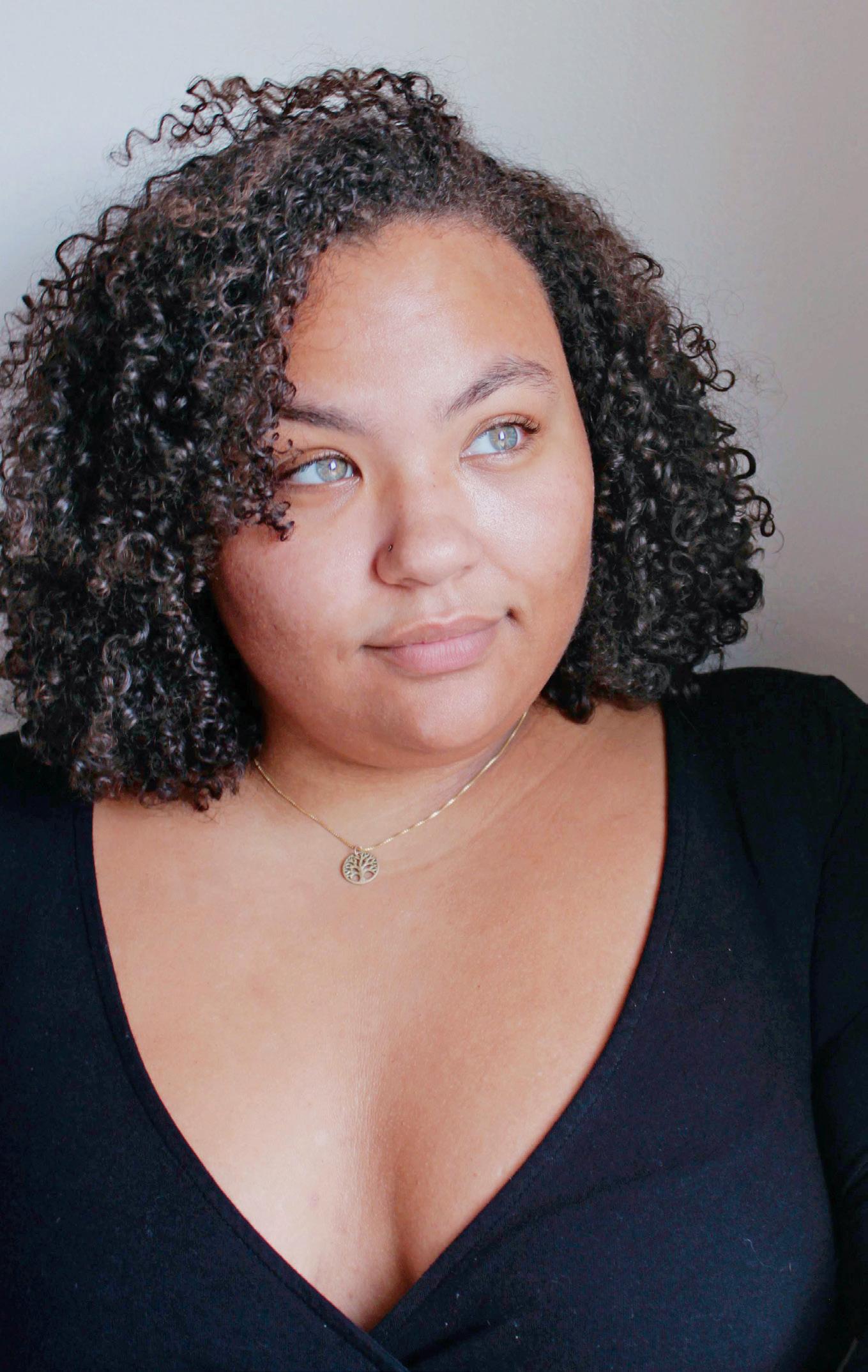






the Oakland and other East Bay police departments.
Nightcrawling is not all trauma and pain; there is Trevor, the young boy Kiara unofficially “adopts” and protects, and Alé, the friend who loves Kiara unconditionally. It is also a richly complex love letter to Oakland and a profound tribute to Black youths and their joy, love, integrity, humanity, frailty, courage and more. It portrays full-spectrum Black life, and it matters.
In an interview, Mottley says, “I wrote this book in 2019. In the aftermath of the uprisings in 2020, there became a push for narratives of Black joy. In many ways, Black people in America are not afforded experiences defined only by our joy. Part of humanizing every character is giving them a complete spectrum of experiences and emotions. I thought about what does Kiara’s whole life look like? What does she desire? How do these pursuits change the way we build a relationship with her and understand her?”
The reader experiences with Kiara moments of exuberance while reliving her missed childhood. “Trevor becomes that symbol for her of childhood she wasn’t allowed to inhabit,” says Mottley. “She re-mothers him, but also steals flashes of childhood through him in moments on the basketball court. She pursues love and connections, and also we see fatigue, grief, moments of trauma and cruelty. That allows the trauma to always be contrasted by other things that make up her life.
“This is the reality of being human. She wouldn’t survive if she didn’t have those other things. It’s important we cling to those, hope for something. That
doesn’t mean we need to see it through a lens that says the only way Kiara can have a happy ending is if the justice system rewards or resolves something for her.”
A consortium of noble and tragic forces causes Kiara to engage in sex work, or nightcrawling. To complete those sections, Mottley consulted a real life sex worker to vet the material. “There’s bias even in how people write about it. There’s also a system of locality that means sex work looks different in Oakland than other parts of the country.
“I’m always writing in service of my characters. It was important to have a Black woman with sex work experience in Oakland. Even then, I took her notes and thought of the variance in sex workers’ experience and what it
BLACK JOY ‘Nightcrawling’ is the debut novel by Oakland author Leila Mottley.

would be like for Kiara. It would be very different for a white sex worker, because race informs everything. Especially in the context of her interactions with police officers.”
Mottley wrote her novel primarily during the summer months between graduating from high school and departing to attend Smith College in Massachusetts. She sold the book to Knopf after a 13-way bidding competition between publishers and says she initially wanted her age, then 18, not to be part of the marketing. “I became aware that I’d be asked questions about my age, and it would be what led the conversation. I made peace with that. I learned to see that any entryway that ends up with the book in people’s hands (is acceptable). The book speaks for itself.”



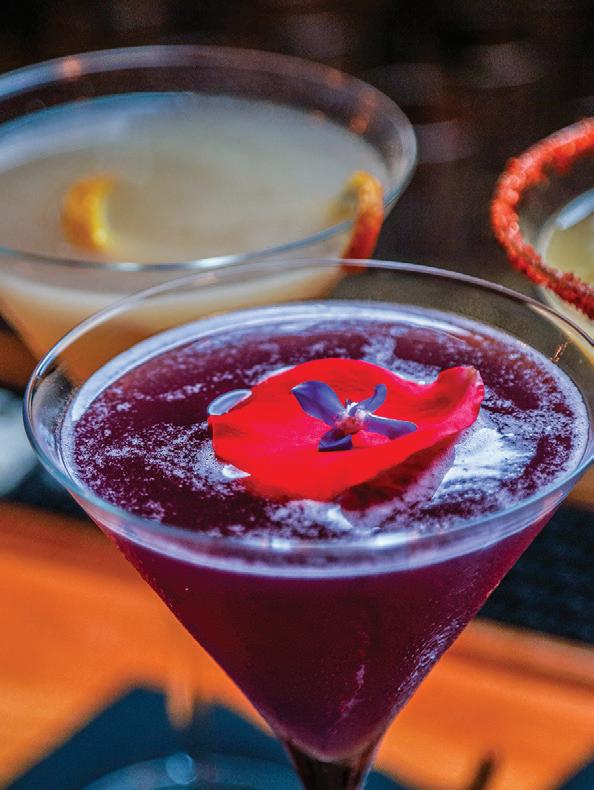



»
Even so, the constant questions about age and a tendency to ask her parents how they “made her like this,” gets old. “My dad would tell you, ‘I did nothing.’ We view teenagers and children as byproducts of their parents. That reduces young people to one small part of what makes us who we are. What does that say about the neglect of witnessing and looking at young people’s art?
“The reason it leads as the biggest question is because we as a culture have a belief that young people don’t have fully formed thoughts. It comes from the judgment and criticism that we view our past teenage selves through. That leads us to dismiss young people and our art.”
No one is dismissing Mottley’s novel and in that, and in Kiara’s story, resides hope for change and introduces new perspectives. Oakland street art in the book is an element and represents a quintessential, euphoric Oakland teenager experience; a white lawyer working with Kiara pro bono becomes a multifaceted referendum on white
posturing and anti-racist activism; characters are simultaneously victims of systemic corruption and people with agency; a family’s love is generous and at other times, exploitive.
Critiquing her own work, Mottley says, “I started this book when I was 16, and the person I am now at 20 is different than the person who was in limbo and wrote it. Through this story, I maintain compassion for my younger self. As a writer, I have critiques for the way I wrote this book. I’ve had to remind myself it’s an homage to my 17-year-old self. I’ve learned what’s important is to see Kiara as a young person, and it gives us a certain window. I was only able to write it because I was 17 at that time.”
Asked about the writer she is now, in 2022, Mottley speaks about the craft of constructing character, place, narrative—and how when writing poetry it is all-consuming, solitary and quick to exit. But prose, she says, is a process involving continual reflection
and can happen in any setting, including while on a crowded city bus.
As she matures as a writer, there are a few constants in her life. On her bookshelves will be forever books that include the four novels penned to-date by Jasmine Ward, a writer she says is “genius, masterful and consistently beautiful in a poetic way.” And there will be nappy edges, a collection of poetry and prose poetry by Ntozake Shange and Kindred, by sci-fi author Octavia E. Butler.
Mottley’s parents read voraciously. Having chosen of her own volition to “fall in love with literature” during weekly childhood visits to the public library, Mottley says she will always have a shelf full of Black poetry and a relationship with books. “I learned as a child I didn’t need to read or like what everybody else liked. That continued into my adult life. I read broadly, but also allow myself to read for fun. I change what type of book I’m reading depending on my mood.” ❤
It is also a richly complex love letter to Oakland and a profound tribute to Black youths and their joy, love, integrity, humanity, frailty, courage and more. It portrays full-spectrum Black life, and it matters.


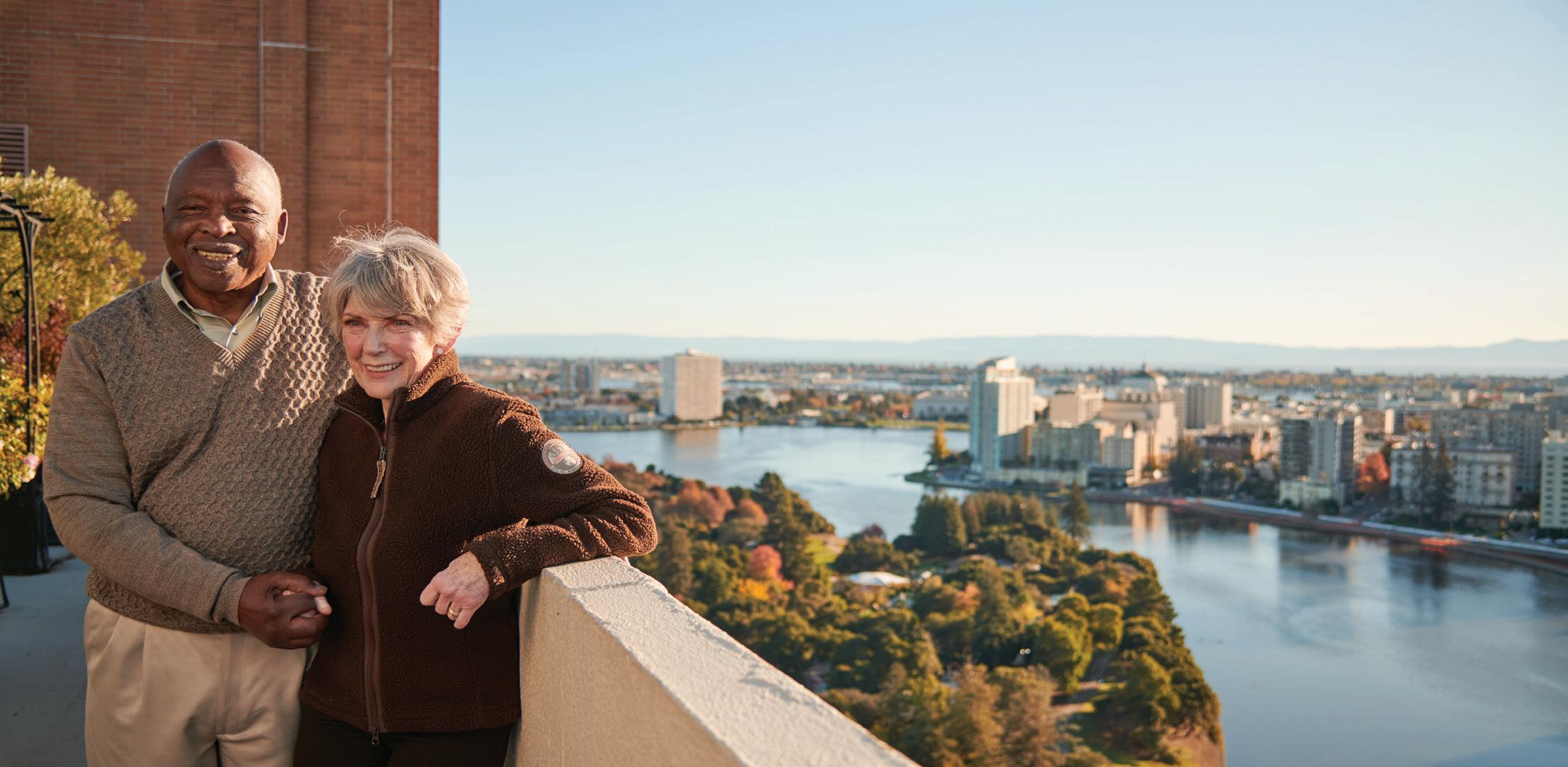
Located in Adams Point just steps away from Lake Merritt, St. Paul’s Towers offers spectacular views and easy access to the best of the East Bay and beyond. Within a mid-century modern architectural gem, you can bask in the light of floor to ceiling windows that open to private balconies in every apartment. Enjoy community spaces or the neighborhood that offer opportunities for walking around the lake, digging in the garden, socializing with friends, discussing the news or following an old or untapped artistic talent. Whatever your passion, we have what it takes to make you feel at home and more. Explore your next steps
100 Bay Place Oakland, CA 94610


